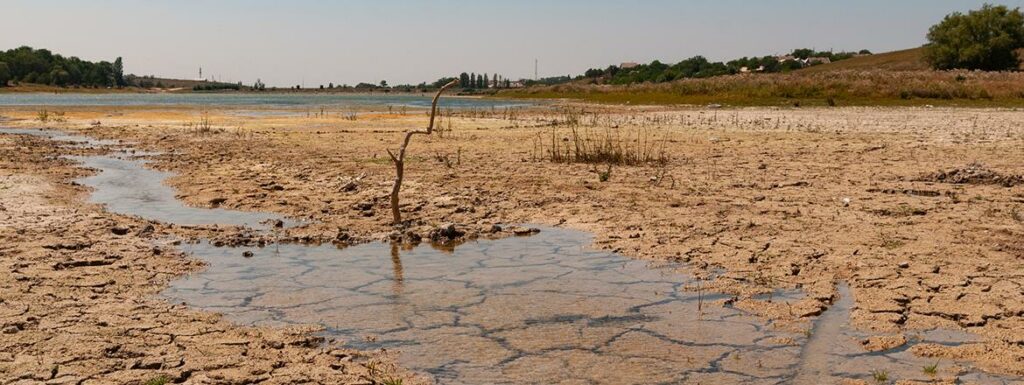From the CO2Science Archive: Climate alarmists continue to claim that global warming will lead to more extreme (both high- and low-volume) river flows, characteristic of more extreme drought and flood conditions. However, river flow records in southern South America, according to the authors, “extend for only a few decades, hampering the detection of long-term, decadal to centennial-scale cycles and trends,” which are needed in order to ascertain the degree of validity of climate-alarmist claims for that part of the world. In an effort designed to greatly extend the streamflow history of Argentina’s Neuquen River – which they say is of “great importance for local and national socio-economic activities such as hydroelectric power generation, agriculture and tourism” – Mundo et al. employed 43 new and updated tree-ring chronologies from a network of Araucaria araucana and Austrocedrus chilensis trees in reconstructing the October-June mean streamflow of the river for each year of the 654-year period AD 1346-2000, using a nested principal component regression approach.
Paper reviewed: Mundo, I.A., Masiokas, M.H., Villalba, R., Morales, M.S., Neukom, R., Le Quesne, C., Urrutia, R.B. and Lara, A. 2012. Multi-century tree-ring based reconstruction of the Neuquen River streamflow, northern Patagonia, Argentina. Climate of the Past 8: 815-829.
What was learned
The eight researchers determined that in terms of the frequency, intensity and duration of droughts and pluvial events, “the 20th century contains some of the driest and wettest annual to decadal-scale events in the last 654 years.” However – and it’s a very big however – they report that “longer and more severe events were recorded in previous centuries.”
What it means
Once again, and for another part of the planet, the climate-alarmist claim that what they call unprecedented global warming will bring unprecedented drought and flooding to almost every nook and cranny of the globe is shown to be, shall we say, not yet apparent? In fact, because the bulk of the 554 years that preceded the 20th century were part of the much colder Little Ice Age, it would appear that, if anything, the “unprecedented” global warming of the past century has brought Argentina’s Neuquen River less extreme streamflow conditions, which is just the opposite of what the world’s climate alarmists contend should have happened.



How do you reconcile, "the 20th century contains some of the driest and wettest annual to decadal-scale events in the last 654 years” with "if anything, the “unprecedented” global warming of the past century has brought Argentina’s Neuquén River less extreme streamflow conditions" ? That we've had "some" more extreme events in the previous 554 years does not show that the driest and wettest extreme events in the 20th century are statistically insignificant, or aren't part of an upward trend. The vagueness of these claims doesn't lend itself to making any conclusions about trends, or even overall comparisons. It is sufficient to conclude that the cAGW conjecture is not supported by the analysis, without reaching for the inference that the analysis counter-indicates cAGW.
(1) The paper is from 2012.
(2) Tree ring data is used as a proxy for stream flow. They are not the same thing. I've read the Case and MacDonald paper this paper cites about "dendrohydrology". "the climatic factors associated with high streamflow (i.e., high winter snowfall and low evapotranspiration) are also associated with wide rings". They fitted a transfer function to match 1902-on ring widths to measured flows, and then projected this back into the past. The problem is that this assumes that the other factors (like temperature and pests) that might affect ring widths were the same in the past. And even within the calibration period, the R^2 value is generally under 0.5, meaning that Case and MacDonald's models, while providing the best past projections available, were not terribly good. This is partly explained by Case and MacDonald themselves: "Underestimation of hydrological peaks is a common feature of tree ring reconstructions and, to some extent, occurs because there is a biological limit to the response of tree growth to high precipitation/low evapotranspiration".
This is very important for understanding the Mundo et al paper: if you are looking for wet extremes in the past using tree rings, you're NOT GOING TO FIND THEM. (Extremely wet will look just like rather wet.)
(3) The abstract says 'the 20th century contains some of the driest and wettest annual to decadal-scale events in the last 654 yr, but longer and more severe events were recorded in previous centuries.' If longer and more severe events occurred in previous centuries, it follows that the 20th century must be better. As noted in the previous point, the lows (dry years) will be there in the tree rings, but the highs (very wet years) are going to look less wet than they were. Mundo et al's models do about as well as Case and MacDonald's, meaning that half or more of the variance in stream flow is NOT predictable from the tree rings. The authors have done a good job, but there's only so much the tree rings can tell you. The "sign test" results in the rightmost column of table 2 tell the story: Mundo et al's models get about 1/4 of the *calibration* period wrong. The sign test is a sign that the authors are honest reporters and a sign that the models are only usable with serious caution because nothing better is available.
Great analysis, thanks. Do we can say with some confidence and at the highest level of deduction that there is little data indicating that things are getting worse in the last 100 yrs bersus 200 or 500 years ago. Reassuring that were not experiencing unprecedented weather and certainly not climate change.